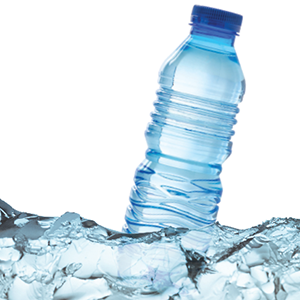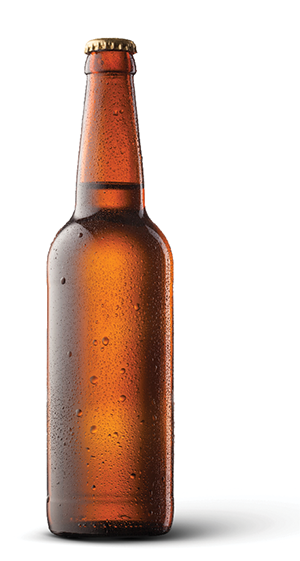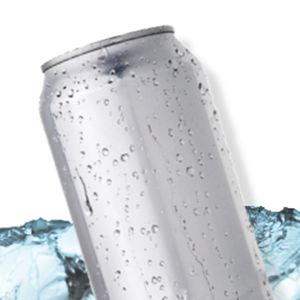Come Memorial Day, Beacon & Bridge, a 25-unit convenience store chain in Michigan, will be sporting a newly reset cold vault, likely featuring more energy drink SKUs but fewer dairy, juice and sports drink items. “With so many new products these days, it’s becoming harder and harder to accommodate them,” said Eric Patterson, merchandising manager. As a result, regular cold box resets are imperative. “The vault is a huge part of our business—accounting for 40% of sales and 40% of gross profit,” the retailer reported. “I take more care in building a planogram for the vault than I do for other categories. It drives traffic.”
Bottled water has become completely substitutable, and consumers are going for availability and price.
Indeed, according to The Coca-Cola Co., beverages are the No. 1 trip driver in c-stores, so it’s important to give consumers a reason to go back to the cold vault time after time. “To keep consumers engaged and traffic to the cold vault steady, there should be a balance between bestsellers and innovation,” remarked Carlton Austin, director of convenience retail strategy and commercialization, at the beverage company. And data and analytics are the appropriate tools to guide c-store operators in allocating space within the cold vault, he continued. “When operators take the time to understand the demographics and preferences of their customers, they’re able to navigate the current climate of supply chain issues while maximizing inventory,” said Austin, adding that hard data make questions about what products to add and what to remove much simpler.
Other beverage suppliers also point to the importance of a consumer-first approach to best-in-class cold-box management. “Small-format shoppers browse fewer items and shop faster, making it essential to optimize shelf flow, space and assortment,” said Jenny Odom, vice president, national accounts at Constellation Brands’ beer division. According to Katie Survance, senior director, human insights at the company, Constellation Brands recommends that retailers “lean into the high end that drives beer category growth, prioritizing high-volume and high-incremental SKUs and segments,” and where consumption is either immediate or same day.
MAKING ROOM FOR INNOVATION
At Beacon & Bridge—which typically devotes up to eight cooler doors to packaged beverages and six doors to beer—energy drinks are driving much of the change in resets. “Everyone has a new energy drink,” Patterson explained, and the energy segment has become a “competitive beast.” While Monster and Red Bull account for a combined 80% share of subsegment sales at the chain, new brands are also showing potential, and Patterson likes to provide them the opportunity to grow. He points to labels like Alani, Celsius, Ghost, G-Zone and Zoa as emerging contenders.
Kim Cuellar, category manager, beer, wine and packaged beverages at Oklahoma’s OnCue chain, is also excited about new energy brands like Alani, Celsius and Starbucks’ Baya—as well as True North caffeinated sparkling water from Monster—and is making room for them. Bottled water, however, has become “completely substitutable, and consumers are going for availability and price,” Cuellar remarked.

Among alcoholic beverages, hard seltzers have reached their peak, Cuellar believes, so her stores have cut back on offerings, focusing instead on segment leaders Truly and White Claw. “I’m so excited to see some new beer innovations coming out,” she said of products like Bud Light Next and Hard Mtn Dew. Yet, core brands such as Bud Light and Coors Light continue to comprise the majority of beer sales at the 75-unit chain, so they remain first in mind when it comes to cooler resets, Cuellar said. When planning a reset, she reviews each category and package, “looking at movement and margin and planning where I should expand or reduce.”
At Plaid Pantry in Oregon, meanwhile, one of the biggest shifts Jon Manuyag, director of marketing, has seen in the beer category since the pandemic began is a movement toward 12-packs. So his spring cooler reset and “fall tweak” will address the shift, he remarked, and “re-evaluate space to sales.” Single can offerings are among other package types that Manuyag frequently looks to fine-tune. “Those are growth drivers for our business from a dollar and unit standpoint, and in terms of overall profitability,” he explained.

SUPPLIER SOURCES
Leading beverage suppliers are armed with strategies and recommendations for convenience retailers to aid them in effectively managing their refrigerators. “Maintaining a well-stocked cold vault that balances consumer favorites with exciting new products will maximize the space through reducing inventory costs and increasing turns,” Austin said.
 Ambient and ancillary merchandising locations should also be used to supplement the cold box, he noted, such as large package sizes of popular products. Kevin Martello, vice president, convenience retail at Keurig Dr. Pepper, added that with flavors contributing to nearly 60% of c-store carbonated soft drink sales, retailers “can drive basket expansion through incremental flavors, sizes and packaging options.”
Ambient and ancillary merchandising locations should also be used to supplement the cold box, he noted, such as large package sizes of popular products. Kevin Martello, vice president, convenience retail at Keurig Dr. Pepper, added that with flavors contributing to nearly 60% of c-store carbonated soft drink sales, retailers “can drive basket expansion through incremental flavors, sizes and packaging options.”
Leslie Newlee, vice president, insights and category development at Red Bull North America, said that while new brands have entered the market, “the convenience channel has been better than other outlets at protecting their shelves from an onslaught of unproven brands.” When planning an annual cold box reset, she advised retailers to consider long-term category forecasts. “Resets should lean into growth categories at the expense of categories in decline,” Newlee said.
Constellation Brands also encourages retailers to look forward, rather than back, when resetting cooler shelves. “C-stores should consider trends when addressing the ‘battle for the cold vault,’” suggested Odom. “Retailers should be allocating space based on future opportunities, as doing so will allow them to stay ahead of what their customers want and capitalize on growth potential.”
“There should be a balance between bestsellers and innovation.”
She recommended leading the beer flow with singles due to their profitability and high traffic, and then organizing singles by segment and price point, as well as placing high-velocity, high-end singles at eye level. Placing the most incremental brands at eye level and near the handle provides easy shop-ability for consumers and trade-up potential for retailers, Odom said.
When it comes to beer multipacks, Erik Newcomb, director of national accounts at Sierra Nevada Brewing Co., said it can be a struggle for c-stores to stock both sixand 12-packs of the same brand and still offer variety. “Retailers will have to decide what’s best for that particular store location based on consumer demand,” he offered. But overall, Newcomb reminded, c-stores must satisfy their baseline beer customers by ensuring the products and packages they want are in stock, while working to grow assortment. “Taking care of baseline customers is job No. 1,” said the craft brewer.
DATA-DRIVEN DECISIONS
Beyond input from vendors, c-stores rely on a host of other tools to aid them in setting and managing the cold vault. Patterson, Manuyag and Cuellar place a big importance on internal sales reports. “I analyze my own internal data heavily and look for multiple markers,” said Cueller of OnCue. In addition to working closely with her distributors and key account managers, Cuellar stays connected to the Oklahoma beer community via groups on Facebook and Reddit to gauge products that may be causing excitement.
 Other retailers say receiving direct requests from their customers is their preferred approach to bringing in new products into the cold box. Jessie Hamilton, manager of Wayne’s Food Mart in Montague, Michigan, said, “We’re a very customer-focused store, surrounded by much bigger players. If our customers ask for something, we do our best to get it for them.” At Mendez Fuel in Miami, Andrew Mendez, co-owner, said, “I listento my customers. They tell me what to buy.” Like Cuellar, Mendez relies on social media to spot what’s trending and is quick to visit local breweries to see what they’re up to. “I’ll reach out to new brands,” the retailer said. “I don’t wait for them to come to me.”
Other retailers say receiving direct requests from their customers is their preferred approach to bringing in new products into the cold box. Jessie Hamilton, manager of Wayne’s Food Mart in Montague, Michigan, said, “We’re a very customer-focused store, surrounded by much bigger players. If our customers ask for something, we do our best to get it for them.” At Mendez Fuel in Miami, Andrew Mendez, co-owner, said, “I listento my customers. They tell me what to buy.” Like Cuellar, Mendez relies on social media to spot what’s trending and is quick to visit local breweries to see what they’re up to. “I’ll reach out to new brands,” the retailer said. “I don’t wait for them to come to me.”
Austin applauds comprehensive strategies when managing the cold box. “Operators should consider every available resource for insights, with consumer behavior being the center of all data,” the Coca-Cola executive said. “Managing the cold vault is both an art and a science. There is an art to selecting and highlighting variety within a c-store portfolio and a science behind understanding the beverage segmentation of your shoppers.”
“I take more care in building a planogram for the vault than I do for other categories. It drives traffic.”
Just as beverage suppliers have advice for retailers around the cold vault, merchants have suggestions for vendors. “Quit trying out all the new flavors,” said Hamilton. “Focus on the core products.” Cuellar advised that before new suppliers reach out to chain retailers about their products, they should be sure to have distribution locked in, whether it’s DSD or broadline. And Manuyag said that when presenting information to retailers, suppliers should point to market-specific data, not national figures.
Convenience retailers and beverage suppliers agree that the battle for the cold vault has never been fiercer. But with the right attention, the cooler can be a win-win for both tiers. “Keep the focus on total vault sales versus looking for that one single home run,” remarked Sierra Nevada’s Newcomb. “Winning in the cold vault will usually come from multiple, steady incremental successes, rather than just one standout hero brand or package.”
